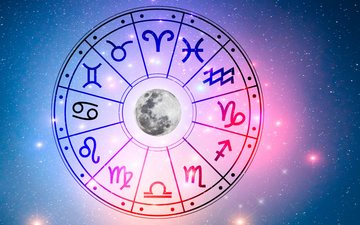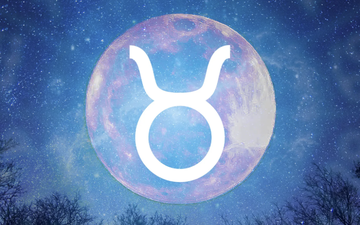
People generally use the rainbow flag to represent the LGBTQ + community, but it is not the only flag used to identify members of this community. Different groups, genders and identities have come out with their flags over the years as a sign of awareness. While many Pride Month events have been canceled or are practically happening, there are still thousands of ways to celebrate. Here are 13 pride flags you can see at the upcoming Pride Month event.
Flag Ylber
This flag is used to symbolize the LGBTQ + community. Many organizations and businesses use this flag as a symbol to show that their creation is a safe space for the whole community. CNN reports that the flag was created by Gilbert Baker in 1978 after it was commissioned by Harvey Milk, the first elected gay official in California. Each color of the flag has a specific meaning and the flag that Baker created had two more colors than the modern flag we have today. Pink and pebble were excluded so that the flag was easier to mass-produce. Colors have the following meanings:
Pink: Sex
Red: Life
Orange: Healing
Yellow: Sunlight
Green: Nature Gurkali: Blue Magic: Purple Harmony: Spirit
Philadelphia's all-encompassing flag for people of color
This flag was created in 2017 to represent people of color in the LGBTQ + community and the unique challenges they face. A source told Philadelphia Magazine, "Despite the activism of people of color who have worked to address racism in Gayborhood over the past year, I think the new flag is a great step for the city to show the world that yes. work with the full support of all members of our community. ?
Actress and director Lena Waithe made a lot of headway when she wore a cape featuring these colors at the 2018 Met Gala.
Flag for bisexual individuals
This flag was created by activist Michael Page. He wanted to create a symbol for bisexuals to feel connected to him, as he felt that the rainbow flag was not doing its job. Each of the colors symbolizes a kind of attraction
Pink (or magenta): Attracting the same sex
Blue (royal): Attracting the opposite sex
Purple (lavender): Attraction for both sexes.
Flag for pansexual individuals
Pink News says it's unclear who created the flag, but since it began appearing online in 2010, it has become a symbol of attraction for all genders.
Pink: Attraction for women
Yellow: Withdrawal for all other genders
Blue: Attraction for men
Flag for lesbian individuals
The original lesbian flag had a red kiss mark on the upper left corner. He was introduced to the world on a blog in 2010, according to OutRight Action International. Some people still use the kiss sign to represent femininity. It is created by Natalie McCray with different shades of red and pink. In a 2018 Medium article, McCray was accused of interfaith, biphobia and racism among others. The new orange striped flag was proposed. In the new flag, the colors represent the following:
Darker orange: Gender diversity
Middle Orange: Independence
Light Orange: Community
White: Unique relationship with wife
Easy Pink: Tranquility and peace
Middle Pink: Love and sex
Dark pink: Feminism
In response to the Medium article, McCray posted on her blog denying these claims. There is also a flag of pride that was made in 1999 by Sean Campbell. It is not so popular in the community and is debatable for a number of reasons, including the fact that it was created by a man and the black triangle may be related to Nazi Germany.
Flag for asexual individuals
According to the Asexsual Visibility and Education Network (AVEN), asexuality is determined by the lack of sexual attraction. "They are not attracted to people sexually and do not want to act according to attracting others in a sexual way."
Asexuality is also a spectrum of attraction, where people can fall into a sub-branch called ?gray asexuality?. People who identify in this way call themselves "gray asi." This spectrum includes people who rarely feel sexual attraction.
According to Medium, the flag was created in 2010 to help create awareness for the community.
Black: Represents sexuality as a whole
Gray: Represents gray asexuality and demisexuality. Demisexuality is defined as no sexual attraction unless there is a strong emotional connection according to AVEN.
White: Represents purple sexuality: Represents community
Flag for intersex individuals
According to Planned Parenthood, intersex is an umbrella term for those whose bodies do not match the gender of the male and female. Some people may have both genitals.
This flag was created in 2013 by Morgan Carpenter. In an interview with Intersex Peer Support Australia, Carpenter said: "I wanted to create an image that people could use to represent intersex people, without being influenced by what I think are often misunderstandings or stereotypes." Carpenter chose these colors as community symbols.
Gold or yellow: Inspired by a story told by another intersex individual Mani Mitchell to restore the term "hermaphrodite" used against intersex individuals.
Purple Circle: Carpenter has expressed in an interview: "The circle is about us not being completely broken", as well as the right for intersex individuals to make decisions about their bodies.
Flag for transgender individuals
This flag was created by a transgender woman Monica Helms in 1999. According to her: "The model is such that no matter which way you fly, it will always be correct. This symbolizes us trying to find our correctness. , life itself ?.
Blue: Represents Pink Boys: Represents White Girls: Represents people who are in transition, have no gender or are gender neutral
Flag of the genderqueer (not sure of their gender identity)
People belonging to this subgroup are individuals who do not conform to the ideas of society about how they should act or express themselves based on gender that were assigned at birth. According to Psycology Today, "This may be in terms of their thoughts, feelings, behaviors, and, most importantly, their gender identity." The flag was created by Marilyn Roxie in 2011.
Purple: Represents androgen
White: Represents the identity of age
Green: Represents non-binary people
Flag of the gender-fluid (people who can't identify themselves as a certain gender)
People belonging to this subgroup do not identify themselves with one gender, rather their gender identity shifts between man, woman or elsewhere within the spectrum. How often one's identity changes depends on the individual. The flag was created by JJ Poole in 2012 according to OutRight Action International.
Pink: Represents femininity
White: Represents all genders Purple: Represents both masculinity and femininity Black: Represents lack of blue Gender: Represents masculinity In an interview with Majestic Mess Designs, Poole said they created the flag because this subgroup did not have a symbol and the term "genderqueer" "It didn't exactly match.
Flag for genderless individuals
According to the Oxford Dictionary, someone who is genderless is not identified with any gender. This flag was created in 2014 by Salem X according to OutRight Action International. Black and white: Represents lack of gender
Gray: Semi-gender
Green: Non-binary genders
Flag for non-binary individuals
Like being genderqueer or gender-fluid, the gender identity of non-binary people fluctuates. OutRight Action International says the flag was created in 2014 by Kye Rowan for non-binary people who did not feel that the genderqueer flag represented them.
Yellow: Represents genders that are not included in the non-binary gender White: Represents people who identify with many or all genders Purple: Represents genders that are a combination of male and female Black: Represents people who are genderless
"Progress" flag
This flag was created in 2018 by Daniel Quasar in response to the modern Philly flag. This flag combines colors and lines from the Philly version for the overall flag along with the colors of the transgender subgroup flag.
Source: Seventeen





